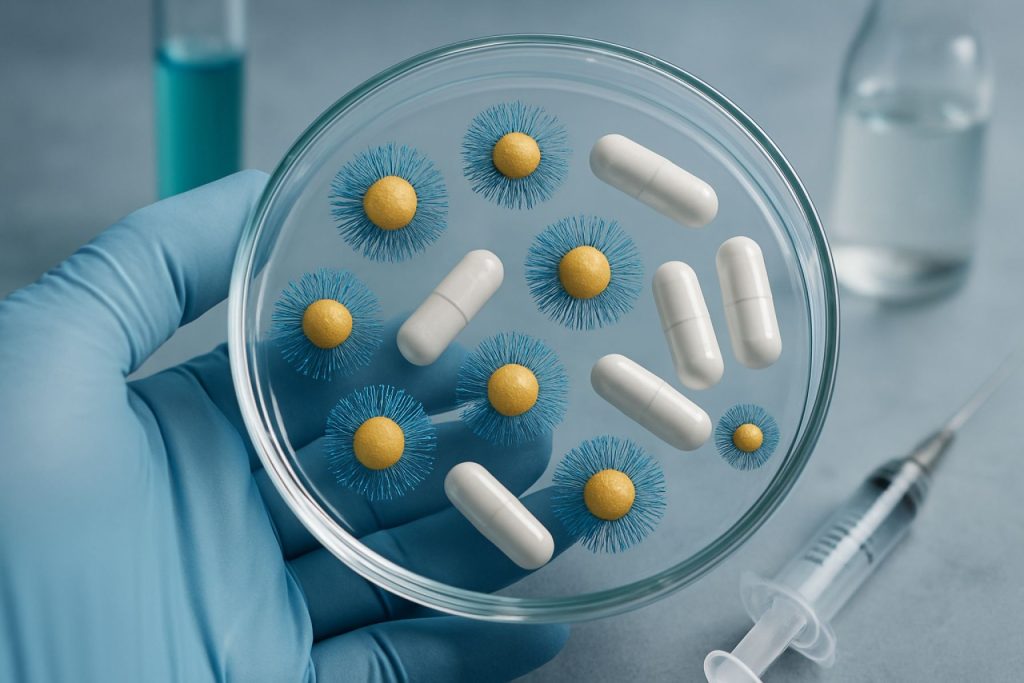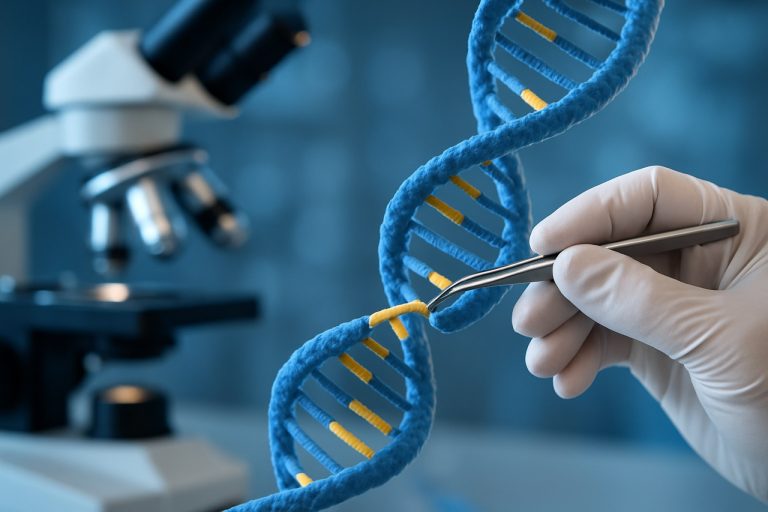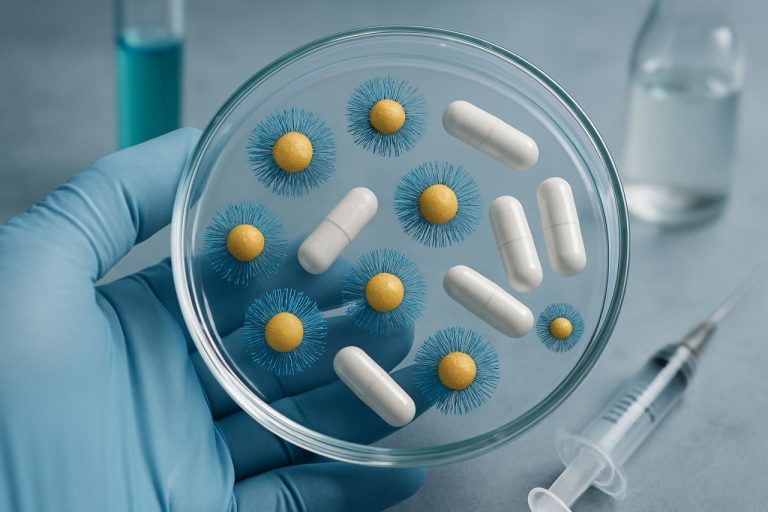
How Amphiphilic Block Copolymers Are Transforming Drug Delivery Systems: Unlocking Precision, Efficiency, and Next-Generation Therapeutics
- Introduction to Amphiphilic Block Copolymers
- Structural Features and Self-Assembly Mechanisms
- Advantages Over Traditional Drug Delivery Methods
- Formulation Strategies and Nanocarrier Design
- Encapsulation and Controlled Release of Therapeutics
- Targeted Delivery and Enhanced Bioavailability
- Challenges and Limitations in Clinical Translation
- Recent Advances and Case Studies
- Future Perspectives and Emerging Trends
- Sources & References
Introduction to Amphiphilic Block Copolymers
Amphiphilic block copolymers are macromolecules composed of two or more chemically distinct polymer segments, typically featuring both hydrophilic and hydrophobic blocks. This unique architecture enables them to self-assemble in aqueous environments into a variety of nanostructures, such as micelles, vesicles, and polymersomes. These self-assembled structures have garnered significant attention in the field of drug delivery due to their ability to encapsulate and transport both hydrophilic and hydrophobic therapeutic agents, thereby enhancing drug solubility, stability, and bioavailability National Institutes of Health.
The versatility of amphiphilic block copolymers lies in their tunable chemical composition and molecular weight, which allow for precise control over the size, morphology, and surface characteristics of the resulting nanocarriers. This tunability is crucial for optimizing drug loading efficiency, release kinetics, and targeting capabilities. Moreover, the incorporation of stimuli-responsive segments enables the development of “smart” drug delivery systems that can release their payload in response to specific physiological triggers, such as pH, temperature, or redox conditions U.S. Food and Drug Administration.
Recent advances in polymer chemistry and nanotechnology have further expanded the potential of amphiphilic block copolymers in drug delivery, facilitating the development of multifunctional carriers for combination therapies, imaging, and theranostics. As a result, these materials are at the forefront of research aimed at improving the efficacy and safety of therapeutic interventions European Medicines Agency.
Structural Features and Self-Assembly Mechanisms
The structural features of amphiphilic block copolymers are central to their function in drug delivery systems. These copolymers consist of covalently linked hydrophilic and hydrophobic segments, which drive their unique self-assembly behavior in aqueous environments. Upon exposure to water, the hydrophobic blocks tend to minimize contact with the surrounding solvent, while the hydrophilic blocks interact favorably with water molecules. This amphiphilicity leads to the spontaneous formation of various nanostructures, such as micelles, vesicles (polymersomes), and more complex aggregates, depending on the block lengths, composition, and environmental conditions Nature Reviews Materials.
The self-assembly process is governed by thermodynamic principles, where the system seeks to minimize the free energy. The critical micelle concentration (CMC) is a key parameter, representing the threshold above which copolymers aggregate into micelles. The size, shape, and stability of these assemblies can be finely tuned by altering the molecular weight ratio of the blocks, the degree of polymerization, and the chemical nature of each segment American Chemical Society. For instance, increasing the hydrophobic block length typically results in larger core sizes, which can enhance the loading capacity for hydrophobic drugs.
Moreover, the dynamic nature of self-assembly allows for responsive behavior to external stimuli such as pH, temperature, or ionic strength, enabling controlled drug release profiles. The versatility in structural design and self-assembly mechanisms underpins the broad applicability of amphiphilic block copolymers in the development of advanced drug delivery systems Elsevier.
Advantages Over Traditional Drug Delivery Methods
Amphiphilic block copolymers offer several significant advantages over traditional drug delivery systems, primarily due to their unique self-assembling properties and tunable architecture. These copolymers can spontaneously form micelles, vesicles, or other nanostructures in aqueous environments, enabling the encapsulation of both hydrophilic and hydrophobic drugs within a single carrier. This dual-loading capability enhances the versatility of drug formulations and allows for the co-delivery of multiple therapeutic agents, potentially improving treatment efficacy and patient compliance National Institutes of Health.
One of the most notable advantages is the improved solubility and bioavailability of poorly water-soluble drugs. By encapsulating these drugs within the hydrophobic core of micelles, amphiphilic block copolymers can significantly increase their apparent solubility and protect them from premature degradation in the biological milieu. This protection extends the circulation time of the drug in the bloodstream, facilitating enhanced accumulation at the target site via the enhanced permeability and retention (EPR) effect, which is particularly beneficial in cancer therapy National Cancer Institute.
Furthermore, the chemical versatility of block copolymers allows for precise control over particle size, surface charge, and functionalization with targeting ligands. This enables the development of stimuli-responsive systems that release their payload in response to specific physiological triggers, such as pH or temperature changes, thereby minimizing off-target effects and reducing systemic toxicity U.S. Food and Drug Administration. Collectively, these features position amphiphilic block copolymers as a superior platform for next-generation drug delivery.
Formulation Strategies and Nanocarrier Design
Formulation strategies for amphiphilic block copolymers in drug delivery focus on optimizing nanocarrier design to enhance drug solubility, stability, and targeted delivery. Amphiphilic block copolymers, composed of hydrophilic and hydrophobic segments, self-assemble in aqueous environments to form nanostructures such as micelles, vesicles, and polymersomes. The choice of block lengths, molecular weights, and chemical composition directly influences the morphology, size, and drug-loading capacity of these nanocarriers. For instance, increasing the hydrophobic block length can improve the encapsulation efficiency of poorly water-soluble drugs, while the hydrophilic segment, often polyethylene glycol (PEG), imparts stealth properties that prolong circulation time by reducing opsonization and clearance by the mononuclear phagocyte system (Nature Reviews Drug Discovery).
Advanced formulation strategies include the incorporation of stimuli-responsive blocks that enable controlled drug release in response to environmental triggers such as pH, temperature, or redox conditions. This approach allows for site-specific drug release, minimizing systemic toxicity and improving therapeutic efficacy. Surface modification with targeting ligands, such as antibodies or peptides, further enhances the specificity of nanocarriers toward diseased tissues or cells (Journal of Controlled Release). Additionally, co-delivery systems can be engineered by encapsulating multiple therapeutic agents within a single nanocarrier, enabling synergistic effects and overcoming multidrug resistance.
Overall, the rational design of amphiphilic block copolymer nanocarriers, guided by an understanding of polymer chemistry and biological interactions, is central to developing effective and safe drug delivery systems for a wide range of therapeutic applications (National Institutes of Health).
Encapsulation and Controlled Release of Therapeutics
Amphiphilic block copolymers have emerged as highly effective carriers for the encapsulation and controlled release of therapeutic agents, owing to their unique self-assembly properties in aqueous environments. These copolymers spontaneously form nanostructures such as micelles, vesicles, and polymersomes, which possess a hydrophobic core and a hydrophilic shell. This architecture enables the efficient encapsulation of hydrophobic drugs within the core, while hydrophilic drugs can be incorporated into the shell or aqueous compartments, thereby enhancing the solubility, stability, and bioavailability of a wide range of therapeutics Nature Reviews Materials.
The controlled release of encapsulated drugs is achieved through the careful design of block copolymer composition, molecular weight, and the incorporation of stimuli-responsive segments. For instance, pH-sensitive or redox-responsive blocks can trigger drug release in response to the acidic or reductive microenvironments characteristic of tumor tissues or intracellular compartments American Chemical Society. Additionally, the degradation rate of biodegradable copolymers, such as those containing poly(lactic acid) or poly(caprolactone) segments, can be tuned to modulate the release kinetics of the payload Journal of Controlled Release.
Overall, the versatility of amphiphilic block copolymers in encapsulating diverse therapeutics and enabling precise, stimuli-responsive release profiles makes them a promising platform for advanced drug delivery systems, with ongoing research focused on optimizing their safety, targeting efficiency, and clinical translation.
Targeted Delivery and Enhanced Bioavailability
Amphiphilic block copolymers have emerged as highly effective nanocarriers for targeted drug delivery, offering significant improvements in both specificity and bioavailability of therapeutic agents. Their unique architecture—comprising hydrophilic and hydrophobic segments—enables the self-assembly into micelles or vesicles, which can encapsulate hydrophobic drugs within their core while presenting a hydrophilic shell to the biological environment. This structural versatility allows for the surface modification of copolymer nanoparticles with targeting ligands such as antibodies, peptides, or small molecules, facilitating active targeting to specific tissues or cell types, such as tumor cells overexpressing certain receptors National Institutes of Health.
Targeted delivery using amphiphilic block copolymers not only enhances the accumulation of drugs at the desired site but also minimizes off-target effects and systemic toxicity. This is particularly advantageous in cancer therapy, where the enhanced permeability and retention (EPR) effect allows nanoparticles to preferentially accumulate in tumor tissues National Cancer Institute. Furthermore, the encapsulation of drugs within these nanocarriers protects them from premature degradation and clearance, thereby improving their pharmacokinetic profiles and overall bioavailability U.S. Food and Drug Administration.
Recent advances include the development of stimuli-responsive block copolymers that release their payload in response to specific triggers such as pH, temperature, or enzymatic activity, further refining the precision of drug delivery. Collectively, these strategies underscore the potential of amphiphilic block copolymers to revolutionize targeted therapy and enhance the clinical efficacy of a wide range of pharmaceuticals.
Challenges and Limitations in Clinical Translation
Despite the promising potential of amphiphilic block copolymers in drug delivery, several challenges and limitations hinder their successful clinical translation. One major obstacle is the complexity of large-scale synthesis and reproducibility. The precise control over molecular weight, block composition, and polydispersity is essential for consistent performance, yet achieving this at an industrial scale remains difficult and costly U.S. Food and Drug Administration. Additionally, regulatory agencies require comprehensive characterization and quality assurance, which can be challenging due to the structural diversity and dynamic behavior of these polymers.
Another significant limitation is the potential for immunogenicity and toxicity. While amphiphilic block copolymers are generally considered biocompatible, their degradation products, accumulation in organs, or unintended interactions with biological systems can elicit adverse immune responses or toxicity European Medicines Agency. Furthermore, the in vivo stability of self-assembled structures such as micelles or vesicles is often compromised by dilution, protein adsorption, or shear forces in the bloodstream, leading to premature drug release and reduced therapeutic efficacy.
Translational hurdles also include the scalability of formulation processes and the need for robust sterilization methods that do not compromise polymer integrity or drug loading. Finally, the lack of long-term clinical data and standardized protocols for evaluating pharmacokinetics, biodistribution, and safety further complicates regulatory approval and widespread adoption National Institute of Biomedical Imaging and Bioengineering. Addressing these challenges requires interdisciplinary collaboration and continued innovation in polymer chemistry, formulation science, and regulatory science.
Recent Advances and Case Studies
Recent years have witnessed significant progress in the design and application of amphiphilic block copolymers for drug delivery, driven by advances in polymer chemistry, nanotechnology, and biomedical engineering. Notably, the development of stimuli-responsive block copolymers has enabled the creation of “smart” drug delivery systems that release therapeutic agents in response to specific physiological triggers such as pH, temperature, or redox conditions. For example, pH-sensitive poly(ethylene glycol)-b-poly(histidine) copolymers have been engineered to release anticancer drugs preferentially in the acidic microenvironment of tumors, thereby enhancing therapeutic efficacy and minimizing systemic toxicity (National Institutes of Health).
Case studies highlight the clinical potential of these materials. Poly(ethylene glycol)-b-poly(lactic acid) (PEG-PLA) micelles have been used to encapsulate poorly water-soluble drugs like paclitaxel, improving their solubility, stability, and pharmacokinetics. The formulation Genexol-PM, based on PEG-PLA micelles, has been approved in several countries for the treatment of breast cancer, demonstrating the translational impact of amphiphilic block copolymer technology (U.S. Food and Drug Administration). Additionally, recent research has explored the use of block copolymer vesicles (polymersomes) for the co-delivery of multiple drugs or combination therapies, offering synergistic effects and improved patient outcomes (Royal Society of Chemistry).
These advances underscore the versatility and promise of amphiphilic block copolymers in addressing longstanding challenges in drug delivery, with ongoing research focused on optimizing their biocompatibility, targeting capabilities, and clinical translation.
Future Perspectives and Emerging Trends
The future of amphiphilic block copolymers in drug delivery is marked by rapid innovation and the emergence of sophisticated design strategies. One key trend is the development of stimuli-responsive copolymers that can alter their structure or release profiles in response to specific physiological triggers such as pH, temperature, or redox conditions. These “smart” systems promise enhanced site-specific delivery and reduced systemic toxicity, addressing longstanding challenges in chemotherapy and gene therapy applications (Nature Reviews Materials).
Another promising direction is the integration of targeting ligands and imaging agents into block copolymer architectures, enabling theranostic platforms that combine therapy and diagnostics in a single system. This approach facilitates real-time monitoring of drug distribution and therapeutic efficacy, paving the way for personalized medicine (Advanced Drug Delivery Reviews).
Advances in polymer chemistry, such as controlled/living polymerization techniques, are enabling the precise synthesis of block copolymers with tailored molecular weights, architectures, and functionalities. This precision allows for the fine-tuning of drug loading, release kinetics, and biocompatibility (American Chemical Society).
Looking ahead, the convergence of nanotechnology, bioengineering, and artificial intelligence is expected to accelerate the rational design of amphiphilic block copolymer systems. Machine learning algorithms are being explored to predict polymer–drug interactions and optimize formulation parameters, potentially reducing development timelines and costs (Advanced Drug Delivery Reviews). Collectively, these trends underscore the transformative potential of amphiphilic block copolymers in next-generation drug delivery solutions.
Sources & References
- National Institutes of Health
- European Medicines Agency
- Nature Reviews Materials
- National Cancer Institute
- National Institute of Biomedical Imaging and Bioengineering
- Royal Society of Chemistry



